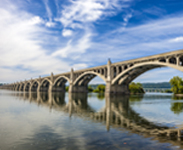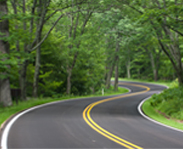How To Build A Custom Motorcycle Exhaust System
Exhaust systems not only affect the sound and performance of a motorcycle, but they also affect the look. When you see all those people riding cruisers, how many of them are sporting their stock exhaust? Take a look around at your next rally: aftermarket or performance pipes are all over the scene. Watch any one of those television chopper shows and you’ll see that they make exhaust fabrication look like a piece of cake. It’s not as easy as it looks, but it is doable. When thinking about how to build a custom motorcycle exhaust system, you have to make sure you do it the right way. There’s more to a complete exhaust system than just bending tube. A couple of caveats: in some states changing exhaust is not legal due to strict EPA laws. Also, oxygen sensors are located on newer motorcycle exhaust pipes. Make sure that they can be reinstalled or the engine my not run correctly.
Custom exhaust can be built in a variety of ways. Exhaust systems for your motorcycle can be modified from stock or built completely from scratch. Different stock and aftermarket exhaust systems can be combined for your perfect match. Custom motorcycle builders may choose to fabricate from a collection of bent tubes. Fancier shops may have a mandrel bender that bends straight pipe hydraulically. Most exhausts are built from steel pipe and then are chromed or ceramic coated. They can be built from stainless steel and other alloys. Whatever the material is, it needs to be able to withstand the tremendous heat needed for bending the tube.
A complete exhaust system needs:
- A flange
- Header tube
- Baffle
- Exhaust hanger
A complete exhaust system needs:
- Welder
- Grinder
- Welding Clamps
- Polishing wheel
This site and articles contained herein are provided for general informational purposes only and are not a substitute or intended as professional advice. Please be sure to refer to your owner’s manual or consult a mechanic for information specific to your motorcycle. The information contained on this site and articles contained herein are provided on an “as is” basis with no guarantees of completeness, accuracy, usefulness or timeliness and without any warranties of any kind whatsoever, express or implied. Rider Insurance Company, Rider Insurance Agency, Inc. and its affiliates (together, “Rider”) assume no responsibility for any errors or omissions in the content of this site and articles contained herein. Any action taken upon this information is strictly at your own risk and Rider will not be liable for any losses or damages in connection with your use of this site and articles. Additional terms and conditions apply and are available at https://model.rider.com/plymouth-rock-assurance-general-terms-and-conditions/.

An exhaust pipe is connected to the engine via a flange. A flange is basically either a flat piece of metal that bolts to the engine or piece of the engine to which the exhaust can be clamped. On older, smaller bikes, the exhaust is clamped over a flange that is permanently fixed to the engine head. On newer bikes, the flange is attached to the exhaust and bolted to the engine with some kind of gasket in-between. The differences between the engines determines the type of flange and how many bolts are used to hold it in place.
When building exhaust from scratch, a flange can be bolted to the engine and a short header tube can be tack welded into place. Depending on where you want the exhaust to route, the header tube can be tucked tight to the engine, or bent into a wild, custom design. Note that bends on exhaust should not be hard and should not have any kinks or corners. These will impede air flow. Of course, some headers are stepped to create torque. This means a smaller tube leads from the engine, into a larger diameter tube. The smaller tube creates the desired back pressure. Another method of making a header tube is cutting up a stock or aftermarket pipe while just leaving the header tube.
The exhaust can be routed however it seems fitting. Some people like true duals where one pipe comes out on each side of the bike. Shotgun style pipes are usually straight back on one side of the bike. A two into one, four into one (etc.) design is achieved when all header tubes collect to one tailpipe. Two into one style systems do usually yield the best results on a dynamometer, because of the equalized exhaust pressures.
Wherever the pipes are plumbed, they have to be supported. An exhaust bracket is something fixed to the motorcycle frame that will support the weight of an exhaust system. The flange itself cannot support the weight and may crack due to stress. It is best to hide the exhaust mounting bracket as best you can. Brackets are made from anything form solid bar, angle iron, sheet metal to cast metal. Wire is not a sufficient hanger. It has to be sturdy. It can be rubber mounted, but make sure it is secure.
The pipe can be finished with a muffler, exhaust tip or trim ring. There are all kinds of tips available for custom exhausts. Fish tail, oval, rolled, baloney cut, and radius tips are all examples of what a customizer can use. Some motorcycle exhaust systems have machined aluminum tips. I know some people like the sound of no mufflers, but not all baffles while muffle the sound. A baffle is just something used to create back pressure. This back pressure will help with low end torque. If you like to use drag pipes, a simple lollipop baffle can be used. Weld a washer vertically to the top of a screw head. Drill a hole about two inches from the end of the exhaust tip. Insert the washer/screw into the hole, and that’s a baffle. It can be turned at different angles to give you more or less back pressure.
Once the system is all tacked into place, it can be removed from the motorcycle and finish welded. Grind down the welds and chrome or coat the pipe. Some people like to wrap their exhaust with a heat wrap. Heat shields can top it all off and be clamped to the pipes once they are reinstalled on the motorcycle.
Don’t forget to use never-seize on the exhaust studs. It helps when the pipes need to be removed again. Remember not to run pipes anywhere near fuel. Keep all wires away as they can be melted on the hot surface. Keeping the pipes the same length will help with performance. Short pipes tend to run the engine lean. A carbureted bike should be jetted for a richer fuel mixture. Fuel injected bikes will need to be re-mapped. If you run too lean, the motorcycle will burn a valve and cause a lot of damage. As with any of the projects we’ve outlined previously, DO NOT attempt this unless you are 100% comfortable doing it. There are plenty of shops that can do this for you if you don’t have the tools or skill and experience level required. Ride safe!
Plymouth Rock Assurance is a marketing name used by a group of separate companies that write and manage property and casualty insurance in multiple states. Motorcycle insurance in New Jersey and Pennsylvania is underwritten by Rider Insurance Company. Each company is financially responsible only for its own insurance products. Actual coverage is subject to the language of the policies as issued by each separate company.





